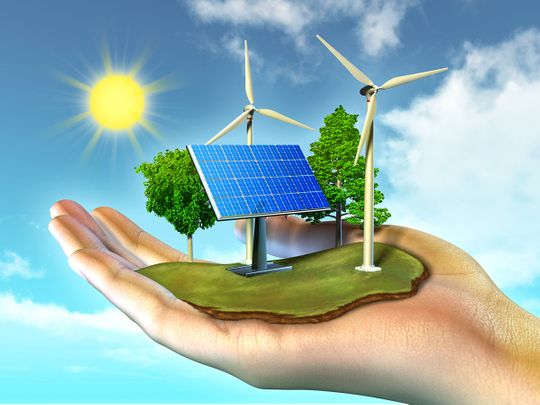
In the dynamic landscape of energy production, the shift towards sustainable energy solutions stands as a defining moment. This blog unravels the intricacies of sustainable energy, exploring the diverse technologies and innovations that propel us towards a future powered by clean, renewable sources.
Harnessing the Sun: Solar Power Brilliance
1. Solar Photovoltaic (PV) Technology
At the forefront of sustainable energy, solar power harnesses the energy emitted by the sun through Photovoltaic (PV) technology. Solar panels, composed of semiconductor materials, convert sunlight into electricity. This method not only provides a clean energy source but also reduces reliance on conventional fossil fuels, contributing to a significant decrease in greenhouse gas emissions.
2. Advancements in Solar Efficiency
Ongoing research and development in solar technology continually push the boundaries of efficiency. Innovations such as multi-junction solar cells and thin-film solar panels enhance the conversion rates of sunlight into electricity. These advancements not only make solar power more accessible but also increase its viability as a primary energy source.
Winds of Change: Wind Power Revolution
1. Harnessing Wind Turbines
Wind power stands as a stalwart in the renewable energy lineup, capturing the kinetic energy of the wind through turbines. As the wind turns the blades, mechanical energy is converted into electricity. Wind farms, both onshore and offshore, harness the power of wind to generate significant amounts of clean energy, contributing to the diversification of the energy mix.
2. Innovative Turbine Designs
The evolution of wind turbine designs continues to enhance efficiency and aesthetics. From traditional horizontal-axis turbines to modern vertical-axis designs, the focus is on maximizing energy output while minimizing environmental impact. These innovations propel wind power into a central role in the global transition towards sustainable energy solutions.
Flowing Potential: Hydropower Elegance
1. Hydroelectric Power Generation
Hydropower has been a longstanding contributor to sustainable energy solutions, leveraging the kinetic energy of flowing water to generate electricity. Large-scale hydroelectric dams and smaller run-of-river facilities both play pivotal roles in tapping into the inherent power of water, providing consistent and reliable energy.
2. Small-Scale Hydropower for Localized Solutions
In addition to grand-scale hydropower projects, small-scale hydropower systems are gaining prominence. These systems, often used in rural or remote areas, offer localized solutions, promoting energy independence and sustainable development. The versatility of hydropower caters to a spectrum of energy needs.
Unveiling the Potential: Geothermal Energy
1. Tapping into Earth’s Internal Heat
Geothermal energy exploits the Earth’s internal heat to produce electricity. By tapping into reservoirs of steam or hot water beneath the Earth’s surface, geothermal power plants generate clean and consistent energy. This method not only reduces greenhouse gas emissions but also provides a continuous and reliable energy source.
2. Enhancing Geothermal Exploration Technologies
Advancements in geothermal exploration technologies enable a more efficient identification of suitable locations for geothermal energy extraction. Techniques such as seismic surveys and exploration drilling contribute to unlocking the full potential of geothermal reservoirs, expanding the reach of this sustainable energy solution.
The Role of Biomass: Organic Power Generation
1. Transforming Organic Materials into Energy
Biomass energy involves the conversion of organic materials, such as agricultural residues and forestry byproducts, into usable energy. Through processes like combustion, gasification, or anaerobic digestion, biomass power plants generate electricity and heat. Biomass not only provides a renewable energy source but also aids in waste management and reduces reliance on fossil fuels.
2. Bioenergy Innovations
The evolution of bioenergy technologies explores innovative ways to maximize energy extraction from organic materials. Advances in biofuel production, biogas refinement, and biomass combustion efficiency contribute to the sustainability and effectiveness of biomass as a viable energy solution.
Energy Storage Revolution
1. Battery Breakthroughs
As we transition to a sustainable energy paradigm, energy storage becomes a linchpin in ensuring reliability and flexibility. Breakthroughs in battery technologies are propelling us towards a future where energy can be stored efficiently and discharged on demand. Lithium-ion batteries, solid-state batteries, and emerging technologies like flow batteries promise to revolutionize how we store and utilize renewable energy.
2. Grid-Scale Storage Solutions
The scalability of energy storage extends to grid-scale applications. Massive battery installations are emerging, capable of storing excess energy during peak production times and releasing it during periods of high demand. These grid-scale solutions enhance grid stability, mitigate intermittency issues associated with renewables, and pave the way for a more resilient and responsive energy infrastructure.
Smart Grids and Digital Integration
1. Intelligent Energy Distribution
The integration of digital technologies into energy systems marks the rise of smart grids. These intelligent grids optimize the distribution of electricity, manage energy flows, and enable real-time communication between producers and consumers. The result is a more adaptive and efficient energy network that can seamlessly incorporate renewable sources and accommodate the complexities of modern energy consumption.
2. Decentralized Energy Management
Smart grids empower decentralized energy management, allowing individual households and businesses to actively participate in energy production and consumption decisions. With the aid of digital platforms and smart devices, users can monitor, control, and even sell excess energy back to the grid. This democratization of energy aligns with the principles of sustainability and community engagement.
Electrification of Transportation
1. Electric Vehicles (EVs) Reshaping Mobility
The electrification of transportation emerges as a game-changer in reducing reliance on fossil fuels. Electric vehicles (EVs) powered by renewable energy sources contribute to cleaner air and a lower carbon footprint. The ongoing evolution of EV technology, including advancements in battery range, charging infrastructure, and sustainable materials, accelerates the transition to greener mobility solutions.
2. Charging Infrastructure Expansion
Supporting the surge in electric vehicles is the expansion of charging infrastructure. Rapid charging stations, wireless charging technologies, and innovative solutions for residential and commercial spaces contribute to the convenience and accessibility of EVs. This infrastructure growth is a pivotal step in encouraging widespread adoption and further reducing the environmental impact of transportation.
Artificial Intelligence in Energy Management
1. Predictive Analytics for Energy Optimization
Artificial Intelligence (AI) plays a pivotal role in optimizing energy consumption and production. Predictive analytics leverage AI algorithms to forecast energy demand, identify inefficiencies, and suggest strategies for optimizing energy usage. This proactive approach enhances the efficiency of renewable energy systems and contributes to more informed decision-making in energy management.
2. Autonomous Energy Systems
The integration of AI extends to autonomous energy systems that can dynamically adjust to changing conditions. AI-driven control systems optimize the operation of renewable energy assets, improving overall system performance, and adapting to fluctuations in supply and demand. The result is a more resilient and adaptive energy infrastructure.
Community Energy Initiatives
1. Localized Renewable Energy Projects
Communities worldwide are spearheading renewable energy initiatives at the local level. Community solar projects, wind cooperatives, and shared energy storage solutions empower individuals to actively contribute to the generation and consumption of clean energy. These initiatives foster a sense of ownership and community engagement in the sustainable energy transition.





